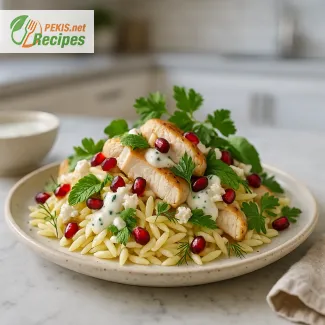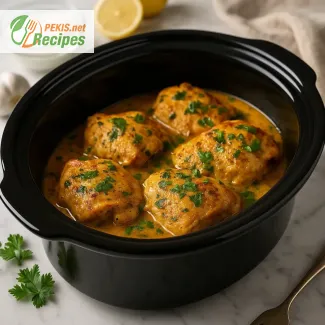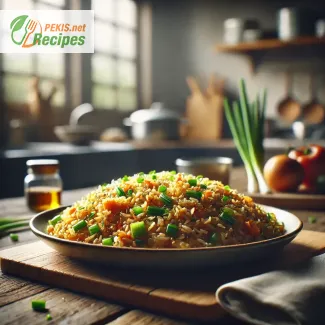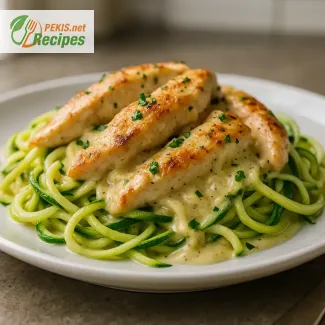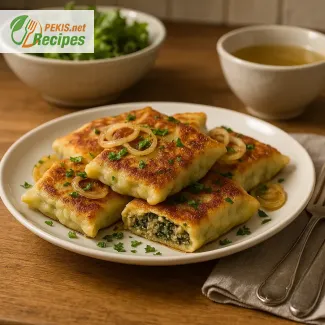
Discover the Flavors of Southern Germany with Traditional Maultaschen
A Swabian culinary gem steeped in heritage and heartiness
Tucked away in the rolling hills and charming villages of southern Germany, a dish of humble origin has captured the hearts of locals for centuries—Maultaschen. These large, square-shaped stuffed pasta pockets, lovingly referred to as Swabian ravioli, offer a rich tapestry of flavors and textures that speak to the region’s rustic charm and culinary ingenuity. Traditionally crafted with a savory filling of minced meat, spinach, onions, herbs, and day-old bread, all lovingly wrapped in soft, homemade pasta dough, Maultaschen represents the perfect union of resourcefulness and indulgence.
Whether enjoyed boiled in broth, pan-fried with butter and onions, or simply served with a crisp green salad and tangy vinegar dressing, Maultaschen adapts seamlessly to both comforting winter meals and light spring fare. With their roots tracing back to the 17th century, Maultaschen were originally dubbed “Herrgottsbscheißerle” or “little God-cheaters” because monks allegedly created them to hide meat during Lent. But beyond the legends lies a dish that has become an inseparable part of Swabian identity and a delightful culinary experience for those seeking authentic German cuisine.
Today, Maultaschen are celebrated not only in Baden-Württemberg but across Germany and beyond, with variations including vegetarian fillings, smoked meats, wild herbs, and even sweet renditions. While some families guard their recipes like treasures passed from generation to generation, the beauty of Maultaschen lies in their versatility—simple enough for a weeknight dinner yet elegant enough for a holiday feast.
Crafting Maultaschen at home may seem like a time-intensive affair, but the reward is in every bite. The medley of seasoned meat and greens, encased in tender pasta sheets and simmered to perfection, evokes the feeling of a cozy German kitchen, where tradition and flavor go hand in hand. Whether you're making them from scratch for the first time or revisiting a cherished family recipe, preparing Maultaschen is an invitation to slow down, connect with heritage, and savor the honest, soul-warming flavors of Swabian cooking.
Beyond their nostalgic significance, Maultaschen also reflect the timeless appeal of comfort food that transcends borders. Their heartiness, deep flavors, and satisfying texture make them a favorite not only among Germans but also among food lovers exploring the diverse world of European dumplings. Similar in spirit to Italian ravioli, Polish pierogi, or Chinese wontons, these German delicacies carry their own distinct identity shaped by centuries of regional tradition and culinary craftsmanship.
In recent years, Maultaschen have enjoyed a resurgence of popularity, appearing in modern interpretations at upscale restaurants and trendy street food markets alike. Whether served in a clear beef broth (known as in der Brühe), gently browned in butter (geröstet), or even grilled for a summer twist, the dish continues to evolve while honoring its origins.
If you're looking to bring an authentic taste of Germany into your kitchen, Maultaschen offers not just a meal, but a story. A story of culture, history, and flavor rolled into tender parcels and shared around the family table. Dive into this Swabian specialty and discover why generations have cherished this dish—one delicious forkful at a time.
1. Prepare the pasta dough:
In a large mixing bowl, combine all-purpose flour, salt, eggs, water, and olive oil. Mix until a dough forms, then knead for 10 minutes until smooth and elastic. Wrap in plastic wrap and let it rest for 30 minutes at room temperature.
2. Prepare the filling:
In a large skillet, sauté the chopped onion and garlic in a bit of butter until translucent. Add the fresh spinach and cook until wilted. Let cool, then finely chop. In a large bowl, combine the ground beef, ground pork, diced bacon, spinach mixture, parsley, crumbled bread, milk, eggs, and spices (salt, pepper, nutmeg). Mix thoroughly until homogeneous.
3. Roll out the dough:
Divide the rested dough into two portions. On a floured surface, roll out each portion into a thin rectangle (about 1 mm / 1/25 inch thick).
4. Fill and shape the Maultaschen:
Place small mounds of filling along one long side of the dough, spaced about 8 cm (3 inches) apart. Fold the dough over the filling and press the edges to seal. Cut into individual pockets (about 8 cm x 8 cm / 3 inch x 3 inch). Press edges with a fork or use a pastry cutter for a decorative seal.
5. Cook the Maultaschen:
Bring the vegetable broth to a gentle simmer. Lower the Maultaschen into the broth and simmer for about 15 minutes. Do not boil. They will float when done.
6. Optional pan-frying (Swabian style):
In a pan, melt butter and fry sliced onions until golden. Add cooked Maultaschen and pan-fry for 2–3 minutes per side until slightly crispy.
7. Serve:
Serve hot, either in a bowl of broth, pan-fried with onions, or alongside a green salad with vinegar dressing.
Creative Enhancements for Elevating Your Maultaschen Experience
Tips and techniques to upgrade the traditional Swabian stuffed pasta
The charm of traditional Maultaschen lies in its rich heritage and comforting flavor profile. However, like any cherished classic, it can be elevated with a few thoughtful adjustments without compromising its soul. By exploring modern variations, making smarter ingredient substitutions, and refining your cooking techniques, you can create a version of this iconic dish that not only stays true to its roots but also delights the contemporary palate.
Additions and variations that elevate the flavor
One of the easiest ways to enhance Maultaschen is by reimagining the filling composition. While the traditional blend of ground beef, pork, spinach, bread, and onion offers a hearty and satisfying taste, you can introduce depth and complexity by incorporating additional ingredients:
- Caramelized onions within the filling add a subtle sweetness that complements the savory meat and herbs.
- A small amount of crème fraîche or mascarpone can be added to the filling for a smoother, creamier mouthfeel.
- Swapping regular bacon for smoked pancetta or Black Forest ham enhances the smokiness and brings a gourmet twist.
- Add a hint of grated hard cheese like aged Emmental or Parmesan for umami richness and a firmer bite.
- A dash of dijon mustard or horseradish mixed into the filling introduces a gentle kick and sharpness.
These modifications do not alter the structure of the dish but significantly deepen its aromatic profile, offering a new experience even to seasoned Maultaschen lovers.
The power of homemade ingredients
Opting for homemade pasta dough is one of the most significant improvements you can make. Unlike store-bought versions, freshly made dough yields a softer, more elastic texture that better complements the richness of the filling. It also allows for precise thickness, which is critical—dough that’s too thick results in chewy Maultaschen, while overly thin sheets may tear during boiling.
Additionally, using fresh spinach rather than frozen improves both flavor and nutritional value. Fresh greens retain their vibrant color and mild bitterness, which balances the richness of the meat. Whenever possible, choose organic eggs, high-quality flour, and fresh herbs for the best result.
Common mistakes to avoid
Even experienced cooks can run into trouble when preparing Maultaschen. Here are some frequent pitfalls and how to avoid them:
- Overfilling the dough: This can cause the pockets to burst during cooking. Use a tablespoon to measure out even portions.
- Improper sealing: If the dough isn’t sealed tightly, the filling will escape into the broth. Use water or a beaten egg to help bond the edges.
- Boiling instead of simmering: Boiling can cause the pasta to fall apart. Always gently simmer Maultaschen for best texture and integrity.
- Undercooked filling: Always ensure the meat is fully cooked, especially if you’re pan-frying Maultaschen after boiling. Sautéing the filling beforehand is recommended.
Avoiding these missteps ensures a more polished presentation and better consistency.
Making it lighter and healthier
For those seeking a more health-conscious version, the Maultaschen recipe can be adapted without sacrificing satisfaction:
- Replace part or all of the ground meat with plant-based alternatives such as lentils, mushrooms, or vegan mince.
- Substitute day-old white bread with whole grain breadcrumbs or oats to increase fiber.
- Use low-fat dairy or plant-based milk instead of full-fat milk to reduce saturated fat content.
- Reduce sodium by opting for homemade broth with minimal salt content.
These swaps not only make the dish lower in calories and cholesterol, but also introduce new textures and nutrients, broadening its appeal to a wider audience.
Flavorful sauces and accompaniments
While Maultaschen are often served in clear broth or pan-fried, elevating the dish with creative sauces can turn it into a restaurant-quality meal. A light sage butter sauce, brown butter with capers, or even a tomato and roasted red pepper coulis can highlight the dumplings’ flavor.
Serve with fermented vegetables such as sauerkraut for acidity, or a salad of arugula, lemon vinaigrette, and toasted seeds for contrast and freshness. These thoughtful pairings add layers of texture and complexity to the dish.
Modern presentation ideas
For special occasions, Maultaschen can be plated in a more sophisticated format:
- Slice cooked Maultaschen diagonally and arrange them with sauce drizzles and microgreens.
- Stack them in a tower formation with caramelized onion layers in between.
- Serve miniature versions as appetizers with dipping sauces like herb-infused yogurt or aioli.
Presentation plays a key role in enhancing perceived flavor, and even the most rustic dishes can shine with a touch of culinary artistry.
Why homemade is always better
Beyond taste, making Maultaschen from scratch fosters a deeper connection to the dish’s cultural origins. It allows you to control every aspect—from seasoning to texture—and ensures the freshest possible result. The act of rolling, filling, sealing, and cooking by hand turns the recipe into a ritual, something to be shared with friends or family, and remembered.
When cooked fresh, Maultaschen are more delicate, the flavors are cleaner, and the dough holds its structure without becoming rubbery. There is also immense satisfaction in knowing that every element on the plate was crafted with care.
A dish with room to grow
Ultimately, Maultaschen is a canvas for creativity. With a little experimentation, the humble Swabian dumpling can become a signature dish tailored to your tastes, dietary preferences, and seasonal ingredients. Whether you're sticking with tradition or branching out, the key lies in respecting the foundations while exploring new possibilities.
Allergens present:
- Eggs
- Milk (dairy)
- Wheat (gluten)
- Bread (gluten)
Gluten-free and allergen-free alternatives:
- Use gluten-free all-purpose flour and gluten-free bread crumbs for a gluten-free version.
- Substitute plant-based milk (like oat or almond) for dairy-free preparation.
- Use egg replacers (such as flaxseed meal and water) for egg-free variation.
- Replace bacon and pork with tofu or plant-based sausage for a vegetarian version.
Vitamins and minerals (per serving):
- Vitamin A: 3500 IU – supports eye health and immune system
- Vitamin C: 18 mg – boosts immunity and iron absorption
- Vitamin B12: 1.8 µg – essential for red blood cell production
- Iron: 4.5 mg – helps transport oxygen through the body
- Calcium: 120 mg – contributes to bone and dental health
- Magnesium: 48 mg – supports nerve and muscle function
- Potassium: 610 mg – helps regulate blood pressure
Antioxidants (per serving):
- Lutein & Zeaxanthin: 1.2 mg – promotes eye health
- Beta-carotene: 2.5 mg – converted to Vitamin A, supports immunity
- Polyphenols: Present in spinach and parsley – help reduce inflammation and support heart health
